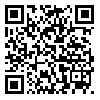Volume 19, Issue 4 (2019)
QJER 2019, 19(4): 159-184 |
Back to browse issues page
Download citation:
BibTeX | RIS | EndNote | Medlars | ProCite | Reference Manager | RefWorks
Send citation to:



BibTeX | RIS | EndNote | Medlars | ProCite | Reference Manager | RefWorks
Send citation to:
Mohseni Zonouzi S J, sadegpour S, Dehgandorost M. Analyzing the Effects of Geographical Concentration of Industry and the Distribution of Educational Level of Employees on Labor Productivity (in Terms of the Food and Beverage Subsectors). QJER 2019; 19 (4) :159-184
URL: http://ecor.modares.ac.ir/article-18-21105-en.html
URL: http://ecor.modares.ac.ir/article-18-21105-en.html
1- Assistant Professor of Economics, Urmia University , sj.mzonouzi@urmia.ac.ir
2- Ph.D. Candidate in Economics, Urmia University
3- Phd student of economics in urmia university
2- Ph.D. Candidate in Economics, Urmia University
3- Phd student of economics in urmia university
Abstract: (5836 Views)
This study is an attempt to identify the persistent obstacles in improving labor productivity path and to give insight to policymakers into the food and beverage industry and related industries about the geographic concentration of industry, educational distribution of employees, and their relationships with labor productivity. For this purpose, a panel data model is applied for explaining labor productivity in the food and beverage industry over the period 2000- 2014. In addition, motivational indices (wage per worker), per capita capital stock and physical capital management index (the number of private and public firms) are used as explanatory variables. The results suggest that improvement in labor productivity in food and beverage industry sub-sectors requires reducing educational dispersion of the labor force by employing high-educated workers, increasing geographical concentration, improving incentive system by determining appropriate wage, and enhancing management through reducing state ownership of industrial firms.
Keywords: Labor productivity, Geographic concentration, Educational distribution of employees, Panel data
Article Type: Original Research |
Subject:
Economics
Received: 2018/05/21 | Revised: 2019/12/21 | Accepted: 2019/12/18 | Published: 2019/12/18
Received: 2018/05/21 | Revised: 2019/12/21 | Accepted: 2019/12/18 | Published: 2019/12/18
Send email to the article author
| Rights and permissions | |
 |
This work is licensed under a Creative Commons Attribution-NonCommercial 4.0 International License. |







